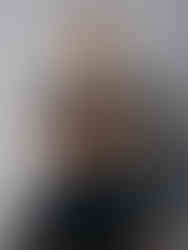Normally I don't like photographing myself because I just get too self-conscious about my appearance. But I figured I'm my best guinea pig when I comes to developing my photography skills. So I just decided to set up a mini studio in my own living room and give it a shot. There was only one photo I actually liked - here's the result. The first image is obviously the retouched version and the second one is the original raw file.
Editorial photography means the image is helping to tell a story or educate the viewer.
Style
Over time I've developed separate methods of editing for different styles, and these styles of photography can look drastically different from each other. In this case, since I was going for a fashion editorial look, most features are heavily retouched to present a "flawless" image, meaning balanced skintones and the removal of all blemishes - basically anything that is distracting.
In general, editorial photography means the image is helping to tell a story or educate the viewer. For example, a lot of articles contain images within them to give more context about its subject. In these images, photography is less about selling a product and more about conveying information.
For my image, it's not just about me, but also about the time period in which it is taken. It's a self-portrait of a man during Covid-19. I'm lost weight, grown out my hair and facial hair, and somehow developed a farmers tan! Though that last one probably could've still been true without Covid.
Retouching
My process for retouching portraits has several different steps. First I open it up in Adobe Lightroom for basic adjustments like exposure, contrast, and white balance. Then I transfer it to Adobe Photoshop for more advanced retouching.

Here I use "Frequency Separation" to remove any blemishes or distracting features and even out the skin tone. Then I use "Dodge and Burn" techniques to lighten and darken areas and basically shape the image - you can compare the two images and see how some areas on my face are just slightly darker or brighter. And finally I start editing for the style of the portrait by adjusting the colors and overall tone.
I still want to get better at my dodging and burning skills so my portraits can get to that magazine-quality level, but I must say I've grown a lot from when I started!




Comments